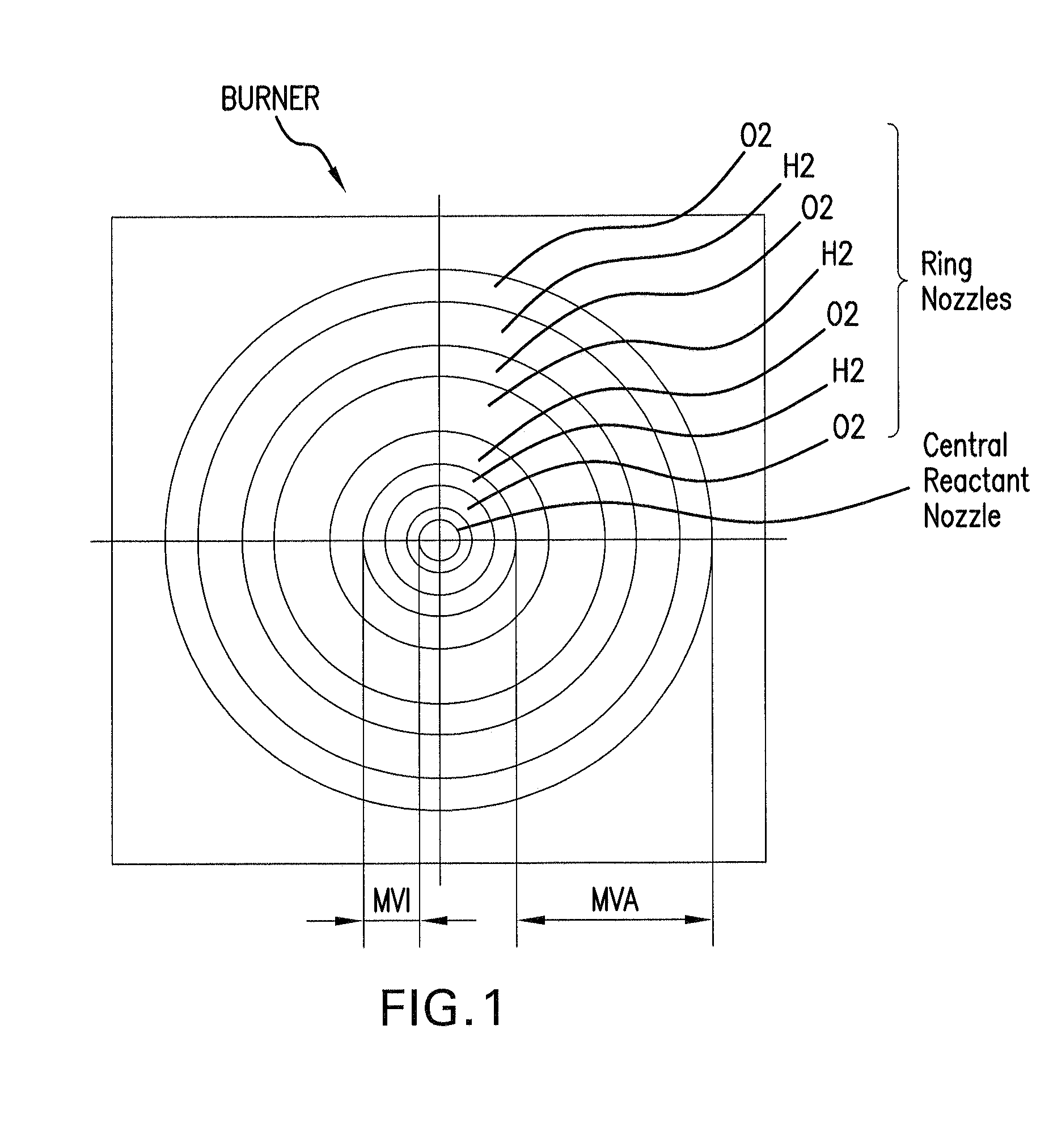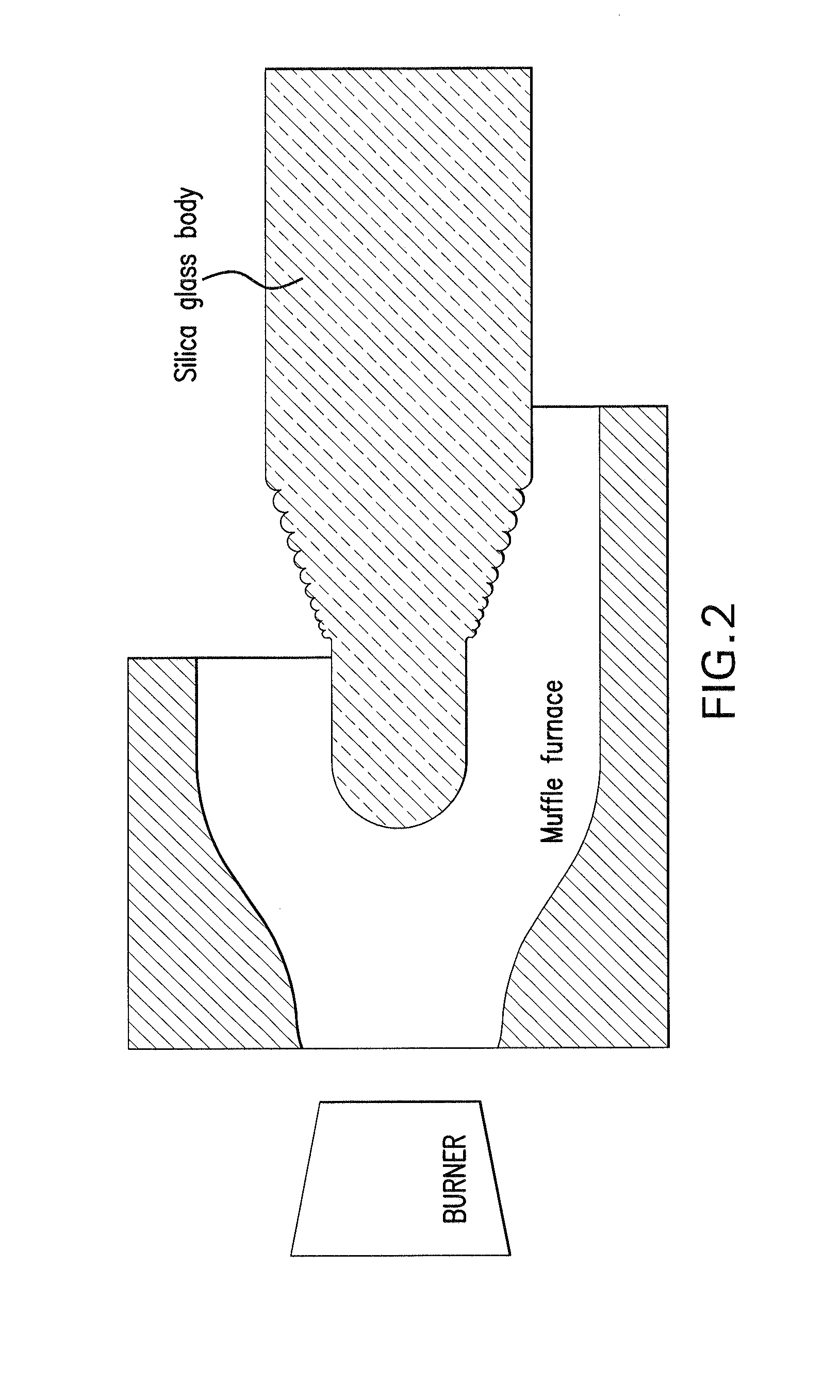Process of making a dense synthetic silica glass, a muffle furnace for performing the process, and silica glass obtained from said process
- Summary
- Abstract
- Description
- Claims
- Application Information
AI Technical Summary
Benefits of technology
Problems solved by technology
Method used
Image
Examples
examples
[0045]A silica glass roll with a diameter of 147 mm and a weight of 46 kg was produced with an 8 nozzle burner and standard muffle furnace with an SiCl4 flow rate of 2.75 slm (standard liter per minute), which corresponds to a ratio of halide volume flow rate to oxygen carrier flow rate of 2.03, with a total hydrogen volume flow rate of 355 slm in 198 hours. The production rate was 256 g / h. The gap ratio of the burner amounted to 5.32. The required amount of hydrogen per kilogram of silica glass product amounted to 83.5 m3 / kg.
[0046]An increase of production rate to 287 g / h could be achieved by the conversion process according to the invention in a muffle apparatus with production parameters that were otherwise the same. The energy efficiency was improved, which is evident because of the reduced required amount of hydrogen, namely 79.4 m3 of hydrogen per kilogram of silica glass product.
[0047]The adjustment of the gap area of the second and third ring-shaped nozzle led to a gap ratio...
PUM
| Property | Measurement | Unit |
|---|---|---|
| Temperature | aaaaa | aaaaa |
| Pressure | aaaaa | aaaaa |
| Length | aaaaa | aaaaa |
Abstract
Description
Claims
Application Information
 Login to View More
Login to View More - R&D
- Intellectual Property
- Life Sciences
- Materials
- Tech Scout
- Unparalleled Data Quality
- Higher Quality Content
- 60% Fewer Hallucinations
Browse by: Latest US Patents, China's latest patents, Technical Efficacy Thesaurus, Application Domain, Technology Topic, Popular Technical Reports.
© 2025 PatSnap. All rights reserved.Legal|Privacy policy|Modern Slavery Act Transparency Statement|Sitemap|About US| Contact US: help@patsnap.com



